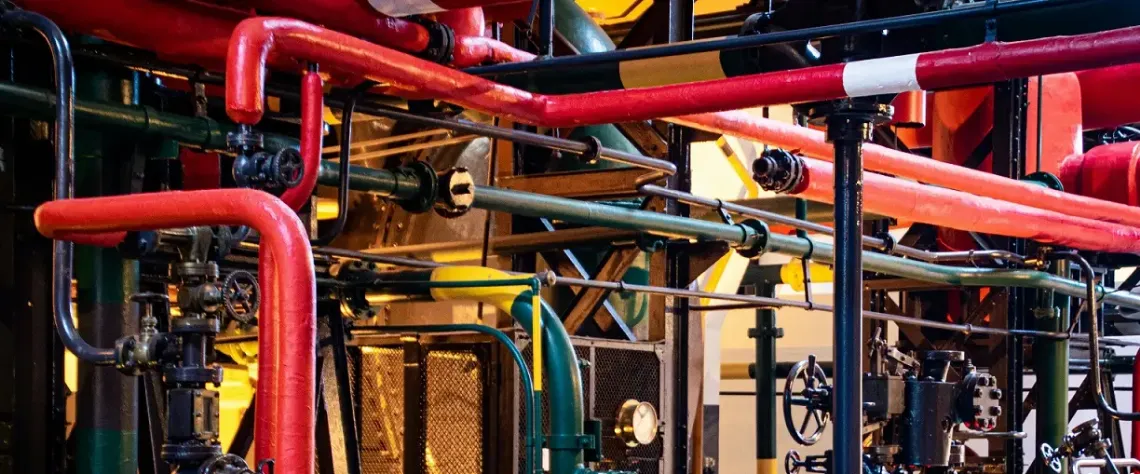 Add My Company
Add My Company

What is a Lockout Device?
A lockout device is designed to ‘lock’ a valve, lever, or actuator in place, preventing it from being accidentally opened or closed. This is crucial in situations where such actions could lead to hazards or operational issues, such as the unintentional release of chemicals or the activation of dangerous machinery.
For example, in many production environments, complex networks of pipes carry gases, chemicals, and other fluids throughout a factory. An unregulated flow or blockage in these pipes can create significant problems, potentially causing catastrophic damage to property and equipment, and, more importantly, posing risks to the health and safety of employees and the public. Lockout devices ensure that valves and other actuators remain in their safe working position.
Similarly, consider a scenario where a piece of machinery requires close inspection, maintenance, or repair by an engineer. If the equipment were to be accidentally activated during this process, it could put the engineer at serious risk. By applying a lockout device to the energy source, the machine is rendered inoperative, ensuring that maintenance work can be carried out safely.
Typically, lockout devices have multiple locking points, meaning they can only be removed once all engineers or safety managers have removed their individual seal or padlock from the device. This is particularly useful when multiple engineers are involved in a task, or when supervisor checks are required as part of a Lockout Tagout (LOTO) programme.
Types of Lockout Devices
Universal Valve Lockouts
Universal Valve Lockouts offer effective lockout solutions for various energy sources. They are available with or without arms and cable attachments and are suitable for use on several types of valves, including quarter-turn, butterfly, gate, and multi-way valves. These devices can be secured with hasps and safety padlocks to ensure they cannot be removed without following proper procedures.
Ball Valve Lockouts
A two-piece sliding ball valve lockout device fully encloses the handle of a ball valve, ensuring it remains in the off position. These lockouts are constructed from highly durable ABS material, which is crack-proof, weather-resistant, and abrasion-resistant.
Clamshell Gate Valve Lockouts
Gate Valve Lockouts feature a clamshell design that completely encloses the gate valve, preventing energy sources from being activated. Once locked with a padlock, hasp, or security seal, the clamshell rotates freely around the valve’s handwheel, preventing it from being turned. These lockouts are available in various sizes for an optimal fit.
Cable Valve Lockout Devices
Cable valve lockouts are ideal for securing gate valves, handles, and oversized equipment. They ensure that energy sources are locked in the ‘off’ position during essential inspections and maintenance. These lockouts are particularly effective when multiple valves need to be locked out simultaneously.
Car Seals
Car seals are single-use security devices that lock safety valves in place. They are especially useful for non-standard or awkwardly positioned valves, requiring only a simple tethering point to function. Car seals are typically used for long-term lockout, sealing a valve in either the open or closed position.
Valve Lockout Security Connectors
Valve lockout security connectors provide a reusable method of encasing industrial connectors and valves, preventing tampering or misuse. These connectors come in two parts for easy installation and are secured using a meter seal. The connector cannot be accessed until the associated security seal is removed.
Steel and Nylon Lockout Hasps
Safety Lockout Hasps enable the locking out of an energy source using multiple securing devices, such as security seals or keyed safety padlocks. They are equipped with a wrap hook to prevent access through brute force. Nylon safety lockout hasps are non-conductive and are ideal for locking out electrical energy sources, ensuring that power cannot be restored until all safety checks have been completed and the padlocks removed.
Associated Lockout Equipment
Safety Warning Tags
Safety tags are an integral part of lockout/tagout programmes, providing crucial information such as who is responsible for locking or removing a valve. Made from durable PVC, these tags are designed to withstand tough conditions.
Plastic Shackle Padlocks
Plastic shackle padlocks are widely used across various industries, including chemical, electrical, and automotive sectors. Their non-conductive construction makes them especially suitable for electrical lockout applications, reducing the risk of electrical discharge during lockout procedures.
Lockout devices are essential tools in maintaining safety and ensuring proper procedures are followed, especially in industries where machinery, valves, or energy sources are involved. For advice on selecting the right lockout device for your specific needs, feel free to contact us for further assistance.
For more information on What is a Lockout Device? How do I use them to protect against hazards? talk to Universeal (UK) Ltd
